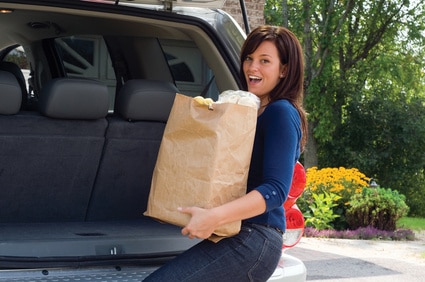When it comes to grocery shopping, do you have one go-to store for everything? If so, you might be missing out on some major savings. Shopping at multiple stores is a great way to stretch your budget.
Now, I am not suggesting you drive cross-city to save 50 cents. Instead, I’m talking about knowingwhich stores in your area offer the best deals on certain products and then using that knowledge to cut your grocery bill dramatically.

Here is how to put this savings strategy to work.
Find all the stores closest to you
First, you need to know which stores you have nearby. Some you may know offhand but others may require a little research. Make a list that includes the following establishments:
- Grocery stores
- Mass merchandisers such as Target and Walmart
- Wholesale clubs such as Costco and Sam’s Club
- Ethnic stores
- Dollar stores
- Drug stores
- Bakery and grocery outlets
- Health food stores
Decide which stores are worth your while
After you have created your list, it is time whittle it down to the stores that make sense for you. Cross out any that are out of your way and don’t offer significantly better savings than a more local store. No reason to drive an hour round trip to Target if your Meijer is 15 minutes away and offers similar pricing.
Also take into account your family’s preference. If you like all-American fare, you can skip the ethnic store. If you are a small household, a wholesale club membership might not be right for you either.
Have a plan for the stores you shop
Once you know which stores make the cut, it is time to decide on your shopping strategy. If you try to hit every store each week, you are bound to get burned out on bargain shopping in no time.
Instead, plan a shopping routine that fits your schedule and family’s needs. That may include making bi-monthly runs to the bakery outlet for bread products you can freeze. Or perhaps you hit the wholesale club once a month to stock up on certain items and combine that with a trip to the dollar store and health food store that are down the street.
Cherry-pick the best deals
You may be thinking you are going to be spending a whole lot of money if you are regularly shopping at multiple stores. However, you aren’t going to making full shopping trips to each store. To maximize your savings, you are only going to buy the very best deals.
If you are looking at the store’s ad, the best deals are usually “˜loss leaders’ printed on the front page. Our Enlightened Shopping section on SavingsAngel.com can also point you to the items that are the biggest bargains ““ those products that are 70, 80 or even 90 percent off. In addition, many stores have at least one or two items a week that can be totally free when purchased with coupons.
The key is to stock up on the deeply discounted items so you won’t have to pay full-price later. Since you may only be going into the store for a couple products, it is important to plan your grocery trips wisely. Don’t make a special trip to a far-off store or the cost of gas may wipe out your savings. Instead, figure out where you will be and plan trips accordingly, such as on the way home from an appointment.
Start with only two stores
For new couponers and bargain shoppers, I strongly recommend starting with only two stores. If you try shopping at more stores to start, you may find yourself quickly overwhelmed. Once you have a system down for your two selected stores, you can add others into the mix.
Pick one store ““ maybe Meijer or Walmart ““ as your main grocery stop. Then, I suggest selecting one of the drug stores, Walgreens, Rite Aid or CVS, as your secondary store. Regular prices at the drug stores can be outrageous but with sales, store promotions and coupons, you can typically find deodorant, shampoo, razors and other bath and beauty products for free or nearly free.
Finally, if you have a Walmart nearby, you may be able to get around shopping at multiple stores by price matching. However, some find price matching to be a hassle so try it with a couple items first before heading to the checkout lane with a full cart.

